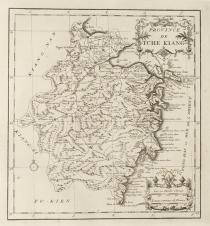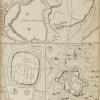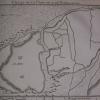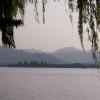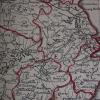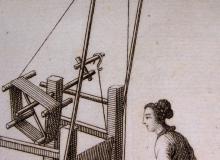Hangzhou
The east China city of Hangzhou features in a famous Chinese saying that claims that up “above there is paradise and down below there is Suzhou and Hangzhou”. Suzhou was well known for its gardens and Hangzhou for the serenity provided by the waters of the West Lake. During the late Ming dynasty and into the Qing dynasty (1644-1911), scholars from the east China towns and cities were highly represented in the departments of the imperial bureaucracies and partly because of this there was a well developed printing industry in this region of China. There were numerous Buddhist monasteries dotting the hills surrounding the West Lake and these too encouraged the level of culture and learning that was present in Hangzhou.
The city of Hangzhou was also at the western edge of the Hangzhou Bay, and thus linked to coastal regions and trade networks, as well being the southern terminus of the imperial route of inland transport, the Grand Canal. Its geographical position was thus was one reason for its importance in Chinese history.
Its importance in Chinese Christian history is linked to all of these factors. The Jesuit expansion throughout China was quite slow, and dependent in many ways upon the relationships the missionaries had formed with scholars throughout the country. As these scholars were often moved around the country, while this enabled to the Jesuits to move along with them (if the scholar was favorable), it also meant that the Jesuits were reliant upon the scholar’s ongoing friendship and support.
During the late Ming dynasty, during the early years of the Jesuit mission to China, three scholars in particular were able to give them support in this region. They were Paul Xu Guangqi (1562-1633), who came from Shanghai, Michael Yang Tingyun (1557-1628) and Leo Li Zhizao (1565-1630), who both came from Hangzhou. When Xu returned to Shanghai in 1608 to mourn his father, he invited the Jesuits to go there with him. Once they did, they then proceeded to establish a base in nearby Hangzhou as well. This became a safe haven in times of trouble as well as being an important center of Christian learning. Books were published here (both translations of Western scientific works as well as Christian apologia), Jesuits were trained here and there was an important church located on the western side of the city.
